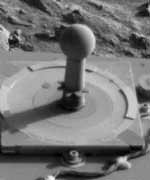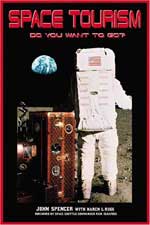The Space Shuttle fleet is housed and processed at NASA’s Kennedy Space Center (KSC), Fla. The order the Space Shuttles are listed does not necessarily reflect the chronological order of future missions.
Discovery (OV-103)
Powered-up orbiter system testing in the Orbiter Processing Facility continues to progress on schedule for Discovery’s Return to Flight mission (STS-114) to the International Space Station. The Space Flight Leadership Council met today and determined the new launch planning window is May 12 to June 3, 2005.
Technicians continue testing and checkout of both the Remote Manipulator System, or Space Shuttle robotic arm, and the starboard manipulator positioning mechanisms. Installation of the new wing leading edge sensors and relay units continues. Ku band target tracking tests are complete.
Atlantis (OV-104)
Atlantis remains in its extensive power-down period, during which technicians are performing Return to Flight modifications. The majority of the baseline wire inspections are complete. Structural inspections and arc track wire inspections continue throughout the vehicle.
With all radiators mounted for flight, technicians completed installations of the radiators’ flex hoses in support of orbiter power up. Work is progressing well with the flex hose conversion to hard lines in the waste water management system, and the flex hose modifications in the potable waste water system.
Flex hoses are used throughout the vehicle for numerous purposes where there is movement between two fixed ends, or where flexibility is desired for ease of installation and/or replacement.
Endeavour (OV-105)
Space Shuttle Endeavour is in its Orbiter Major Modification period, which began in December. Electrical modifications continue in the crew module. Three-String Global Positioning System wire routing in the avionics bay and flight deck continues.
Clean up continues from the bead blasting performed to remove minuscule corrosion from the wing leading edges. Bead blasting is a process using a pressurized pneumatic gun containing silica carbide, plastic pellets or glass beads to remove primer, paint and corrosion from orbiter vehicle surfaces.
Workers also are beginning to set up the protective tents in preparation for painting the wings prior to reinstallation of the Reinforced Carbon-Carbon panels.
Previous Space Shuttle processing status reports are available on the Internet at:
NASA KSC News
For information about NASA’s Return to Flight efforts on the Internet, visit:
http://www.nasa.gov/news/highlights/returntoflight.html
For information about NASA and agency programs on the Internet, visit:
http://www.nasa.gov
Original Source: NASA News Release


